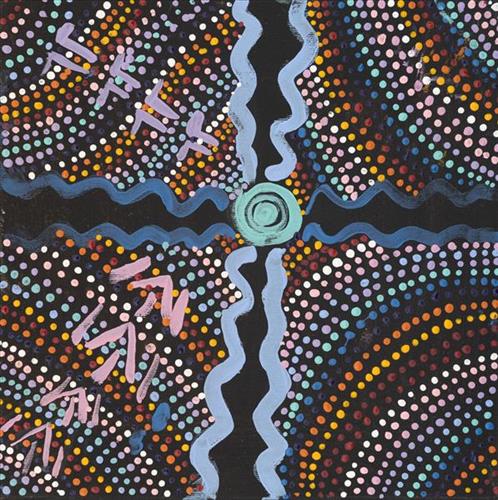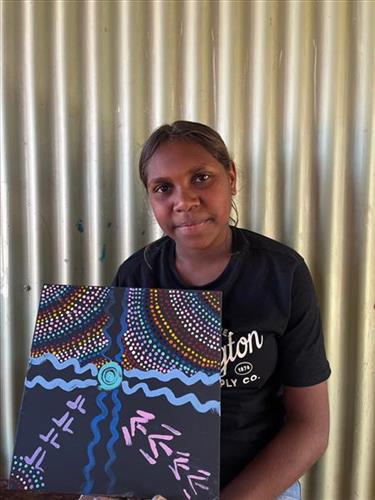111582210706
Jina (tracks, footprints)
Depicted in this work are jina (tracks, footprints), used by Martu people when tracking bush tucker. Distinctive are the jina of the marlu (kangaroo), parnajarrpa (sand goanna), kipara (bustard), karlaya (emu), jila (snake) and man, though tracks of much smaller animals and even insects are also well known by Martu young and old. This acute skills in track observation and identification has developed directly in relation to the hunter-gatherer existence of the Martu during the pujiman (traditional, desert dwelling) era, when their survival depended in large part on the successful tracking of hunted animals. In the absence of an actual animal sighting, tracks act as an identifier that an animal was present, which can then be followed to the animal’s present location. Besides providing information on location, Martu are able to interpret from tracks the passage of time since the tracks were imprinted, as well as the corresponding animal species and its size.
The softer and more extensive the ground surface, the easier it is to locate and follow tracks, thus certain conditions are favoured for tracking. Tuulparra (spring) and yalijarra (hot time) are preferred over wantajarra (winter), when southeasterly tradewinds blow strongly to obscure tracks. Tracks and burrows are also more readily visible in early growth lands, such as nyurnma (freshly burnt Country) and waru-waru (growth of new shoots and young plants). For this reason, fire burning is an important tool in animal tracking. Small burns are lit to clear vegetation, expose burrows, and to allow for access to walk and track readily in exposed sands, while simultaneously providing diverse regenerating habitats.
Whilst desert life has moved away from mobile hunter-gatherer subsistence throughout the course of the twentieth century, bush tucker continues to be a significant component of the modern Martu diet, ensuring the continued relevance of tracking skills. Tracking remains equally valuable as an important cultural practice that is passed on intergenerationally.




